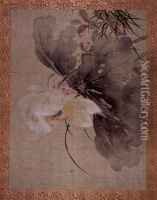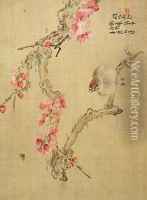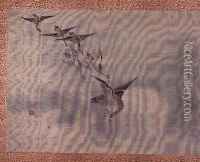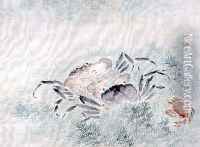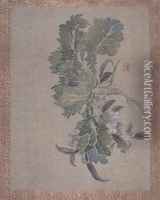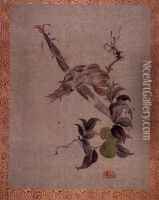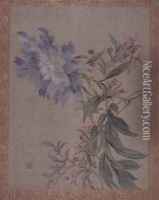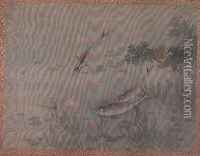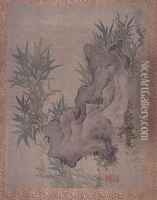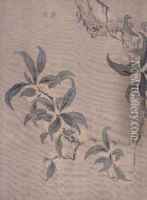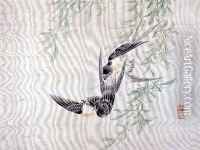Tsubaki Chinzan Paintings
Tsubaki Chinzan was a Japanese painter active during the latter part of the Edo period. Born in Edo (modern-day Tokyo), Chinzan was primarily known for his contributions to the bunjinga (literati painting) movement in Japan, a style deeply influenced by Chinese literati painting traditions. Chinzan's works are characterized by their delicate brushwork and refined aesthetic, often depicting landscapes, flowers, and birds with a poetic sensibility.
Chinzan was not only a painter but also a skilled poet and calligrapher, embodying the ideals of the literati artist, who sought to express scholarly elegance and simplicity through art. His works often incorporated classical Chinese poetry or his own verses, blending visual and literary arts in a manner that was highly esteemed in literati culture.
Despite the influence of Chinese artistic traditions, Chinzan's work also displayed a unique sensitivity to the Japanese aesthetic and natural environment. This fusion of influences helped to define the bunjinga style within Japan, making it distinct from its Chinese counterpart while maintaining a shared philosophical foundation.
Chinzan's contributions to Japanese art were significant during his lifetime and he was well-respected among his contemporaries. However, the bunjinga movement itself began to wane as Japan opened to the West during the Meiji Restoration, and Western art forms became increasingly influential. Despite this, Tsubaki Chinzan's work continues to be appreciated for its beauty and historical significance, offering insights into the cultural and artistic exchanges between Japan and China during the 19th century.
